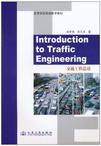交通工程总论
2010-9
人民交通出版社
杨孝宽,贺玉龙 著
219
350000
20世纪70年代末发生在中国的经济改革和对外开放,促使交通行业得到迅猛发展,已经成为中国经济的支柱之一。同时,城市化进程的发展也加速并刺激交通设施的全面提升,从而导致交通专业人员的大量需求。 双语教学是教育部在20世纪90年代启动的教学计划,旨在有条件的学校和专业开设使用英语和中文两种语言进行授课的课程。交通工程作为一门学科,是在20世纪70年代末介绍到中国大陆,北京工业大学在全国率先开设交通工程专业,从此,交通工程专业如雨后春笋在全国许多高校设置。本教材经过6年的精心准备和反复修改才得以出版,主要是为在我国高校开设交通工程双语教学的本科生教学使用。 该教材的出版,可以说是作者6年的双语教学实践以及近30年国内外学习和工作经历的结晶,通过精心总结前人的经验和成果后编撰成书,因此,该书的独道之处在于它是根据交通工程专业本科生教学的要求量体裁衣定制的。该书共分为八章,涵盖了交通工程的基础理论和应用。本书的教学目标是为本科生奠定牢固的专业基础,掌握交通工程基本技能并逐渐引导学生步入交通领域。本书适合本科生一个学期的教学量。 为使中国学生更好地理解和掌握书中的内容,作者在一些交通行业词汇后面加注中文翻译。尽管本书所介绍的内容是学科最为基础的部分,然而,它仍可作为交通工程师和研究生的参考用书。 作者借此机会向为该书出版作出贡献的历届助教表示感谢,他们是:艾庆毅、曹静、张雪、金冰峰、雷蕾和李玲洁。还要特别感激北京工业大学教务处赵一夫和兰劲华老师,他们对双语教学强有力的支持和帮助促成了本书的出版。 应当指出,作为双语教学教材,本书仍处于探索阶段,恳请各位读者斧正。
本书为高等学校双语教学教材。全书共分8章,第1章简要介绍了交通工程学的发展史以及定义、研究范围和目标;第2章包含交通工程中常用的基本概念包括:机动性和可达性,道路分类,连续流和间断流以及驾驶员和车辆的特性;第3章讨论了流量、速度、密度以及三者之间的关系;第4章详细介绍了地点速度、出行时间和延误的特性;第5章讲述了统计学在交通工程中的应用;第6章讨论了道路通行能力,主要介绍了高速公路基本路段和双车道通行能力的计算;第7章描述了交叉口设计的基本过程;第8
章介绍交通控制设备。
本书可作为高等院校交通工程、交通运输、土木工程等专业本科生双语教学用教材,也可供从事交通工程研究的专业技术人员参考。
杨孝宽:现任北京工业大学教授,2001年获得美国南佛罗里达大学博士学位,从事交通工程领域工作近30年,2004年开始双语课程教学。
贺玉龙:现任北京工业大学副教授,2003年获得北京工业大学博士学位,1996年留校任教并于2007年开始从事双语课程教学工作。
Chapter 1 Introduction
1.1 Definition, scope and goal
1.2 Traffic system
1.3 Background of development of traffic engineering
1.4 Respoibility and liability ( professional ethics )
1.5 Traportation legislation
1.6 Characteristics of traffic engineering and challenges that
traffic enginee face
1.7 Explanation of some technical terms
1.8 References
Chapter 2 Basic Concepts and Components in Traffic Engineering
2.1 Mobility veus accessibility
2.2 Classification of roadways
2.3 Uninterrupted and interrupted flows
2.4 Perception-Reaction Time (PRT)
2.5 Visual acuity Static veus dynamic
2.6 Walking speed
2.7 Vehicle characteristics
2.8 Geometric characteristics of roadways
2.9 Traffic control devices
2.9.1 Traffic sig
2.9.2 Traffic markings
2.9.3 Traffic signals
Chapter 3 Volume, Deity & Speed Studies
3.1 Definition of volumes
3.2 Definition of speed
3.3 Deity
3.4 Relatiohip among volume, speed and deity
3.5 Derivation of flow-speed and flow-deity relatiohips
3.6 Finding capacity from basic speed-flow-deity curves
Chapter 4 Spot Speed, Travel Time, and Delay Studies
4.1 Spot speed studies
4.2 Travel time studies
4.3 Delay studies
Chapter 5 Statistics and Application in Traffic Engineering
5.1 Some basic concepts
5.2 Distribution of traffic flow
5.2.1 Poisson distribution
5.2.2 Binomial distribution
5.2.3 Exponential distribution
5.3 MIMI1 system-- queuing theory application
5.4 Chi-square (x2) goodness-of-fit test
Chapter 6 Highway Capacity Analysis
6.1 Capacity, level of service and other related concepts
6.1.1 Definition of capacity
6.1.2 Concept of level of service and measure of effectiveness
6.1.3 Other related concepts
6.1.4 Facto affecting capacity &LOS ( base conditio )
6.1.5 Facto affecting the free-flow speed
6.1.6 Samples for free-flow speed estimation
6.2 Two types of analysis
6.2.1 Steps for operational analysis
6.2.2 Example for operational analysis
6.2.3 Steps for design analysis
6.2.4 Example for design analysis
6.3 Capacity analysis for two-lane highway
6.3.1 Classification of two-lane highway
6.3.2 Capacity of two-lane highway
6.3.3 LOS for two-lane highway
6.3.4 FFS for two-lane highway
6.3.5 Operation analysis for two-lane highway
6.4 Capacity & LOS analysis for weaving, merging, and
diverging on freeways and multilane highways
6.4.1 Basic knowledge
6.4.2 Capacity of weaving area
6.4.3 Level of service criteria
6.4.4 Analysis of weaving areas
6.4.5 Analysis of merge and diverge areas
Chapter 7 Fundamentals of Inteection Design
7.1 Introduction to inteection control
7.1.1 Types of inteection
7.1.2 Hierarchy of at-grade inteection control
7.1.3 Capacity analysis of TWSC inteection
7.2 Basic principles and steps of inteection signalization
7.2.1 Terms and definitio
7.2.2 Saturation flow rate, lost times and capacity
7.2.3 The critical lane and time budget
7.2.4 Concept of left-turn and right-turn equivalence
7.2.5 Delay as a measure of effectiveness
7.3 Fundamentals of signal timing and design
7.3.1 Development of phase plan
7.3.2 Determination of vehicular signal paramete
7.3.3 Determination of pedestrian signal paramete
7.4 Computer software related to inteection signal timing
Chapter 8 Traffic Control Devices
8.1 Definition and categories of traffic control devices
8.2 Introduction of MUTCD
8.2.1 History and background of MUTCD
8.2.2 General principles of the MUTCD
8.2.3 Contents of the MUTCD
8.3 Traffic markings
8.3.1 Longitudinal markings
8.3.2 Travee markings
8.3.3 Object marke and delineato
8.3.4 Word and symbol markings
8.4 Traffic sig
8.4.1 Regulatory sig
8.4.2 Warning sig
8.4.3 Guide sig
8.5 Traffic signals
8.5.1 Characteristics of traffic signals
8.5.2 Traffic signals warranty
8.5.3 Pedestrian signals
8.5.4 Other traffic signals
Glossary
References
Besides, development of computer science and communication has improvedtraffic system.A good example is the introduction of Intelligent TransportationSystem(ITS, 智能交通系统),which brings transportation discipline into a newepoch~ In general Intelligent transportation system (ITS) refers to efforts to addinformation and communications technology to transportation infrastructure andvehicles in an effort to manage factors that typically are at odds (对立) with eachother, such as vehicles, loads, and routes to improve safety and reduce vehiclewear, travel times, and fuel consumption. Sustainable transportation development (可持续交通发展) is a more recentconcept liking environmental, economic, and social use values with the constructionof traffic infrastructures. The ultimate goal is to identity the level of development thatcan be sustained without critical environmental damage, while meeting economicand social needs of present and future generations. Preservation of naturalresources and exploration of new energy become vital steps toward sustainabiiity.As a result environmental factors have been gradually involved in the development oftransportation~ Development of Traffic Engineering in China Traffic engineering was introduced into China rather late, compared to othercountries. In 1980 traffic engineering course was first offered for undergraduatestudents at Beijing University of Technology in mainland China~ In the followingyears many colleges and universities opened this course either affiliated to CivilEngineering Department or under Transportation College. Nowadays, there aremore than 90 colleges and universities in China to offer traffic engineering programwith Master and Ph.D. degrees.

不是双语版,直接英文的
训练下英语吧
通俗易懂,对提高专业英语很有帮助。